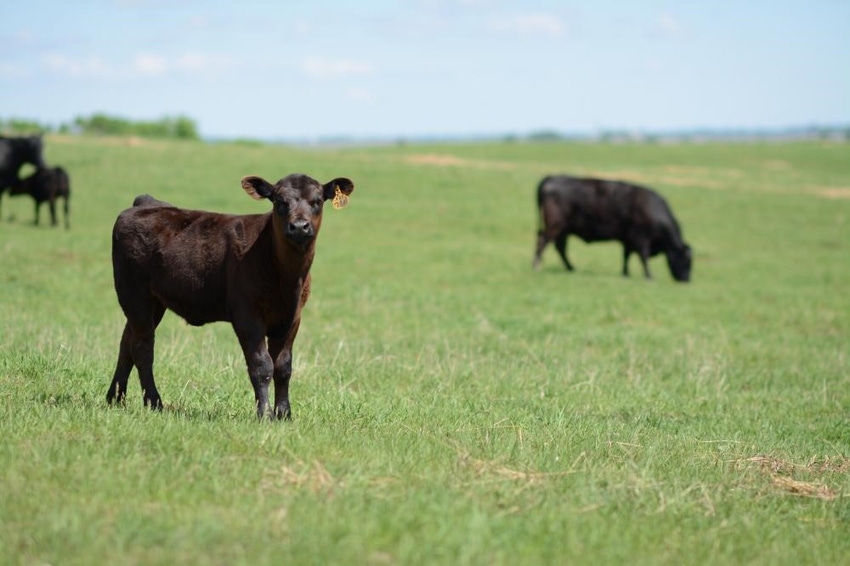Beef industry needs to "rethink" health predictions.
February 27, 2020

The American Angus Assn. is taking first steps toward developing tools that can help select for greater immunity in beef cattle, according to an announcement from Certified Angus Beef.
"As we continue to refine genetic selection, we realize that genetics contribute to animal health in ways we probably don’t fully understand today," Angus chief executive officer Mark McCully said. "As we start identifying genetic lines that are less likely to get sick, that has ramifications across the entire industry."
At last fall’s Angus Convention in Reno, Nev., the association talked about possible future projects that will likely include Australia’s Commonwealth Scientific & Industrial Research Organization (CSIRO) and the Australian Angus Assn. to get at more data more quickly.
"We’ve had increasing scrutiny around the use of antibiotics, so we need to be ready," CSIRO research scientist Brad Hine said. "Our ability to use antibiotics in our food-producing animals is, in the next few years, going to be rapidly reduced. A really good strategy is to try to breed animals that have improved disease resistance."
Over the next two years, 3,000 U.S. cattle will take three trips through the chute: one to administer a test antigen intramuscularly (similar to a vaccine trial), one to gauge response and administer a second antigen and a final trip to measure response to that second stimulant, the announcement said.
"It’s a way for us to measure healthfulness, or an animal’s ability to respond with antibody production," that will help identify DNA markers for immunity, said Stephen Miller, director of genetic research with Angus Genetics Inc. "The goal down the road is that we would have a genomic EPD [expected progeny difference] for immune response based on these phenotypes."
It’s all part of a larger project working with immunologist Bonnie Mallard at the University of Guelph and her team, along with Semex. (This work was funded, in part, by the government of Canada through Genome Canada and Ontario Genomics.)
The Australians have already measured 4,500, and it is the long-term intention that their data set could be combined with the North American project’s findings in the future.
Hine said their project showed that the industry needs to "rethink" health predictions.
"It’s easy to make the assumption that the most productive animal is the animal with the best immune system," Hine said. "Obviously, the healthiest animal grew the fastest."
However, in some instances, disease resistance is negatively correlated with production. For example, high-milking Holstein cows are often more at risk for mastitis, he noted.
"The research tells us, if we select for productivity alone, we increase susceptibility to disease," Hine said.
Different types of pathogens are dealt with in different ways. There’s a cellular response for viruses that live inside the cells and antibodies that fight those outside the cells. CSIRO tested for both.
"The risk you run if you select animals that are very good at one arm of the immune system is that sometimes those animals are not as good at handling pathogens that require the opposite arm," he said, noting that they measured animals at their most stressful points.
"It’s about breeding animals with a really strong immune system so they can handle whatever challenges they face," Hine said.
The heritability appears to be moderate. Correlations to other traits were weak but followed as expected: temperament was favorable, while production traits like growth were negative.
Following indexed animals through the feedlot, the Australians recorded a $3.50 animal health cost for every animal that scored high for immunity. Those in the low group accrued a cost of $103 per head.
Hine said those are conservative estimates that don’t account for labor.
"If we can identify low-immune-competent animals and get them out of the system, there is a huge economic benefit for us as an industry," he said.
The technology is "in its infancy," McCully said, but the long-term goal would be to create genetic tools for Angus breeders and their commercial customers, such as genomic tests for replacement heifers or prescreening cattle bound for the feedyard.
"I could definitely see this as a way of being better able to characterize risk," McCully said. "You could modify your management to the risk level.
"If I’m a feeder, I’m still going to want those cattle vaccinated. It doesn’t change anything about good calf management we do today," McCully continued. "If I can look at a set of cattle that has all of that plus the genetics that give them the likelihood of staying healthier, that becomes an economic signal back to the producer to make more of those cattle."
Hine added that he sees "immune competence as just one part of the puzzle when we start to think about the resilience of the animal."
Cattle producers still need to focus on management and environments that control pathogens so cattle have less exposure in the first place, the announcement said.
"We can breed the animals that are the most disease resistant, but if we put them in a really bad, high-disease environment, then they will eventually succumb," Hine said.
You May Also Like


.png?width=300&auto=webp&quality=80&disable=upscale)
